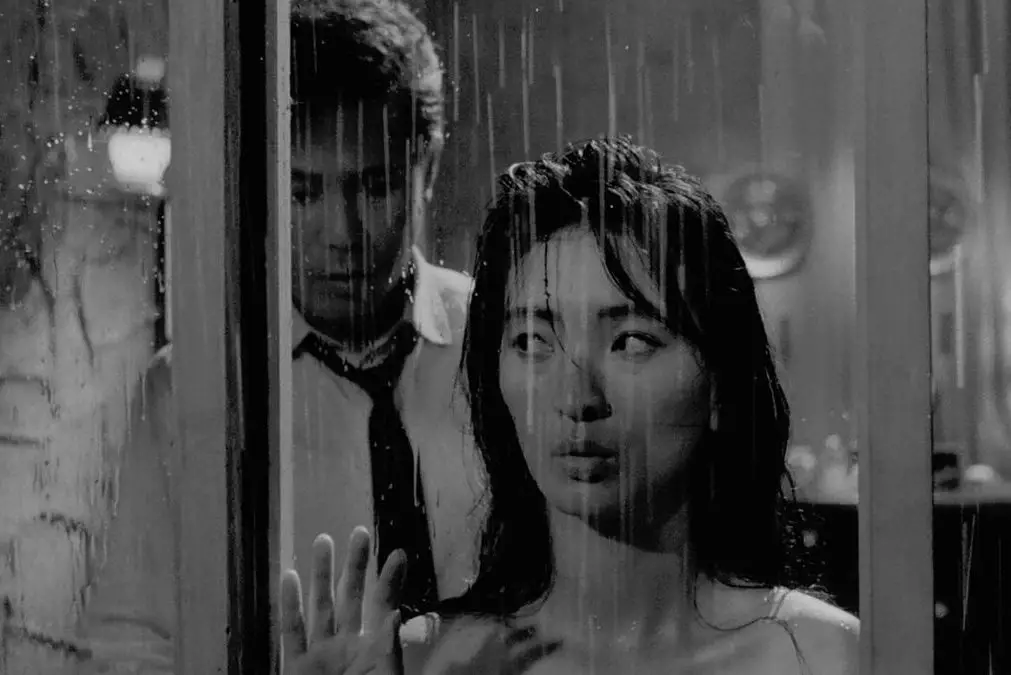Bong Joon-ho’s “Parasite” took the world by storm last year with its magnificent visuals, foreboding tone and dark, satirical sense of humor. This Oscar-winning masterpiece about poverty and capitalism successfully mirrors the truth of current times where wealth is constantly built upon the poor.
What most fans are unaware of, however, is how heavily “Parasite” was influenced by Kim Ki-young’s 1960 horror film, “The Housemaid.” Often labeled as one of the top two or three Korean films, this movie stands apart on its own as a thrilling masterpiece, with Martin Scorsese labeling it a “rich and rewarding” film. Once seen, it’s easy to spot the visual and thematic parallels between the two movies.
Both films ultimately stand as a tragic commentary on the everyday anxieties induced by climbing the social ladder and how moments of dark humor can be found among attempts to attain greater wealth.
Overall Plot of “The Housemaid”
“The Housemaid” revolves around a middle-class family — the Kim household — that hires a maid to help manage domestic affairs in their newly acquired two-story Western-style house. Although the incoming maid appears to be a young and captivating girl, she possesses several unwomanly, almost animalistic traits, like smoking frequently and nonchalantly catching rats with her hands.
Gradually, she seduces Mr. Kim, a well-educated music teacher and pianist, and eventually becomes pregnant by him. After the affair is revealed, the entire household is plunged into a nightmare.
Mr. Kim finds himself caught squarely in the middle of a carnivorous battle between his wife and his mistress, while desperately trying to hide the instability that is inhabiting his opulent home. Even the children are not exempt from this conflict, with both of them manifesting a wicked, violent temper alongside their parents. Everyone in the two-story house ultimately becomes trapped as their suffering continues to grow, making the spacious home gradually feel claustrophobic.
The film manages to end on a wry and somewhat pessimistic note, which perfectly accompanies the overall grotesque and disturbing plot. “The Housemaid” is essentially a film that no critic or cinephile should overlook as it greatly influenced future waves of Korean directors.
What Kim Hoped to Communicate Through His Creation
Surprisingly, “The Housemaid” was inspired by an actual event that was written about in a newspaper article titled “Housemaid suicided because of her pregnancy by her master.” In fact, it was these very circumstances that made this film so interesting and controversial at the time of its release.
During the 1960s, Korea was still part of the developing world and was simultaneously healing from a Japanese invasion, a civil war and extreme poverty. Consequently, the country underwent a massive cultural and socioeconomic change where Korea slowly began to shift away from its long-standing Confucianist principles to less collectivistic Western ideals, where individual wealth (or the simple appearance of being well-off) became extremely important.
In the context of this social transformation, “The Housemaid” essentially stands as a hyperbolic cautionary tale of what could happen if the country was to drift too far from its original ideals. This is shown particularly through the disintegration of the Kim household because of their constant seeking of material wealth, from their desire to move into a new house to the installation of a television. Even the maid’s undignified flirtatiousness and smoking serve not only as a representation of the detrimental effect of Western influence on Korean society, but also how director Kim essentially viewed modern-day Western culture.
The film also manages to touch upon the topic of the feminist movement (Minjung Undong) in Korea at the time through its portrayal of the housemaid. Instead of appealing to the usual timid and subservient nature that is expected of female characters, the film features a sexually predatory femme fatale that breaks through society’s long-established conventions about femininity. It is essentially questioning the validity of Korea’s tendency to oppress women.
Consequently, it’s no wonder why many deemed “The Housemaid” to be so controversial at the time of its original release. Despite the military’s dictatorial hold over the country, the nation’s film industry was highly revered by the people to the point where Kim’s “The Housemaid” and other movies managed to get away with addressing controversial themes.
Moving into the ‘80s and ‘90s, however, the works of Kim and other talented directors were forgotten by the public due to the increasing popularity of television and the prolonged rule of military leaders who used films to uphold their conservative ideologies. Nevertheless, the new generation of directors managed to revive and rediscover Kim’s movies — resuscitating his work by creating a remake of “The Housemaid” half a century after its initial release and referencing his masterpieces through parallel images from his past films.
Parallels to the Film “Parasite”
With numerous visual and thematic parallels to the ‘60s Korean film, director Bong states that “Parasite” was made to be somewhat of an homage to Kim’s “The Housemaid.” Although both movies concern an upper-class family whose (financial and household) stability is threatened by an infiltrator (or infiltrators) arriving in the form of household help, they also demonstrate the consequences of financial greed and serve as a warning to take notice and amend one’s priorities before it is too late.
The trappings of wealth or the characters’ attempts to achieve greater financial success can be seen through visual motifs such as moving up and down the staircase. In “The Housemaid,” numerous characters proceed to fall down the stairs and struggle to get back up — essentially signaling their desperation or effort to adapt to their new social class.
In “Parasite,” there is a similar occurrence where the stairways in the film not only signify the socioeconomic position of a family or individual, but also exemplify how the upper-class’s success is predominantly built upon the struggles or failures of the lower class. This can be seen in numerous instances, especially during the scene where the despairing Geun-se physically lights up the house for the wealthy Park family, even at the expense of his own physical state.
Overall, both movies have done a fantastic job in depicting class anxiety and familial paranoia with their surreptitious plots and venomous bloodshed. The success of “Parasite,” however, ultimately proves how influential its predecessor, “The Housemaid,” remains for many contemporary directors, even those outside of Korea.

















